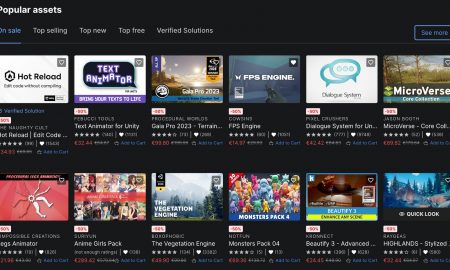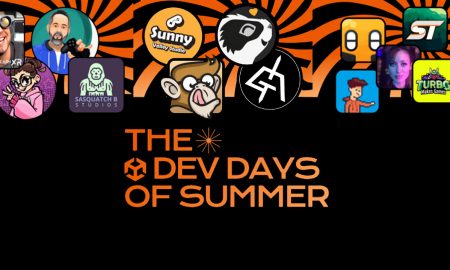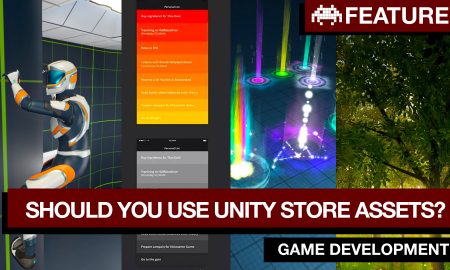

How great is it that professional skill training doesn’t have to involve reading manuals or listening to monotone lectures anymore?
If you have your hand on the pulse of the world of software development, you have probably noticed a major rise in the number of projects involving enterprise training, and especially those that engage immersive technology. This trend was examined by PwC, whose recent report forecasts a 23x increase in workers using immersive tech by 2030.
While the demand for immersive training solutions is greater than ever nowadays, supply is struggling to keep up. The reason for the disparity – obstacles during development. Building training software is already complicated and time-consuming, but adding immersion into the mix adds a whole new layer of difficulty.
Fortunately, you don’t have to go into this fight alone. In this article, we examine why Unity is one of the best tools you can have when building a virtual training application for your company.
Problems of virtual training development in 2021
The problems of training development software are far beyond complex coding or demanding art needs, and the answers to them are also anything but simple. Still, let’s take a cursory look at these issues, leaving room for further exploration in future publications.
1) One company, numerous solutions
Training solutions used to be quite limited in use, so companies would often order 1 or 2 for a particular task or skill. Today, the trend has turned towards businesses aiming to build dozens of training solutions, tailoring them to various branches, professions, and skillsets. This is a big ask for developers.
2) Businesses want their own continuity
With cyberthreats ramping up progressively each year, many businesses are hesitant to delegate maintenance of their applications to the third-party studios that developed them. They prefer to provide maintenance in-house, yet often struggle with finding enough full-time specialists with the expertise and rates they want.
3) Focus on visuals has shifted to experience design
As training programs have advanced, so have requirements for their creation. For example, today’s developers are under pressure to closely replicate real work experiences (e.g. every step of repair, from opening a toolbox to conducting a fix to putting all the tools back). The increase in required content leads to an increase in required work hours.
4) Deployment should be smooth and fast
It has become a top priority for developers to provide quick deployment on numerous devices, and are expected to deliver instant integration of completed solutions: upon completing the creation of a training program, a build should be automatically generated and made accessible to a select few users.
5) Frequent iterations
Given the complexity of training solutions, it is difficult to create specifications for them that cover all relevant and possible interactions. These specifications cannot be taken as gospel, and developers should be prepared for multiple rounds of revisions throughout the process based on client feedback.
How these problems are solved with Unity
You can make leaps and bounds towards solving these issues with the right planning and business strategy, but it will all be for naught without robust tools at your disposal. One such tool is Unity, an engine with a massive ecosystem of integrations and wide-ranging support for various platforms and devices. It also has some of the best assets available right now.
The thing about Unity that makes it a great fit for this line of development is the ability it grants to easily create custom frameworks and application logic for use during development. Let’s examine how this advantage (and others) can help you overcome the pressing issues listed above.
1) Multiple training solutions through automation
Though individual simulations in company-wide training solutions might be different in mechanics, they have similar elements. When developing various training solutions, having a custom Unity framework focused on these common elements will allow you to quickly generate scenarios for individual simulations, requiring only minor tweaks.
2) Built-in tools for continuity and security
Without a doubt, Unity developers are among the most plentiful groups in the programming community, so companies with solutions on this platform can easily find staff for secure continuation of projects. Notably, Unity also supports tools and systems that follow the most up-to-date security guidelines and strictly delegate project roles/accesses.
3) Keeping experiences accurate with unified libraries
Though there is no getting around the need for complex and accurate user experiences in a simulation, the development time can be drastically shortened with libraries of common elements (among different simulations). This system, along with Unity prefabs and nested prefabs can allow you to spend more time on the creation of unique experience elements.
4) A cross-platform behemoth expediting deployment
Unity may not be unique in its support for various devices and operating systems, but it stands out in the sheer diversity of support. This should be appreciated by any cross-platform developers on your team. For example, immersive simulations are supported by top-notch tools like VRTK and MRTK.
5) No need to start from scratch with each new iteration
Some might see the iterative approach as a nuisance, but a custom framework can make it manageable. If you plan to reuse old elements and models, it will allow you to do it in minutes, as well as grant the capability to accommodate multiple corrections before a vertical slice is presented.
Is Unity a “must-have” choice?
Certainly, Unity is not the only engine with a broad and versatile ecosystem, and you don’t need to make the choice alone. If you work with a tech partner, you can also ask them for a technical evaluation before any coding happens. They might choose Unreal Engine 4 as the best tool for the project, and might even choose to go next-gen with UE5.
Still, there is no doubt that Unity is one of the most powerful options available for enterprise training software. The freedom and ease that Unity grants in creating custom frameworks are simply spectacular and worth the hype. If you have a large project requiring lots of iteration/reuse of code or content, be sure to consider this top contender.




































You must be logged in to post a comment Login